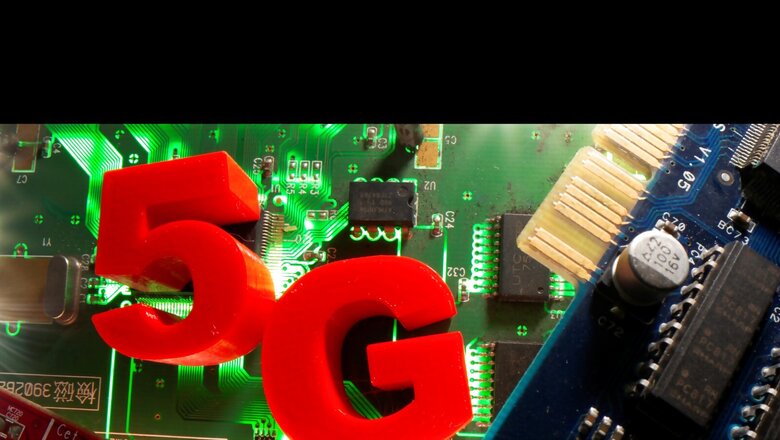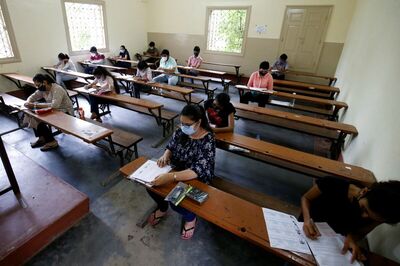
views
Since 1969, the World Telecommunication and Information Society Day (WTISD) has been observed on May 17 to commemorate the creation of the International Telecommunication Union and the signing of the first International Telegraph Convention in 1865.
News18 gives you the timeline of India’s telecom revolution, which led the country to the 21st century’s modern India and to the edge of having the 5G network.
Over the years, the telecom sector helped India grow and transformed it from a poor third-world country to potential global power. The telecommunications industry provides the foundation for lakhs of jobs, growing incomes and global connectivity.
From allowing Indian software companies to become globally competitive in the 1990s to enable daily wage workers to increase their incomes, as well as transforming the lives of agricultural communities and creating a world-class technology ecosystem, telecom’s impact can be seen all over the country.
With the advent of the mobile internet era and the rising affordability of mobile data telephony, it has now become a catalyst for enrichment and empowerment of ordinary Indians.
As the country waits for 5G, which the Department of Telecommunications (DoT) says will be available in 2022, industry insiders are expecting India to reach the next level of economic growth and help the country’s digital transformation.
The Evolution
It all began in 1981 when the government attempted to liberalise the Indian telecommunications market.
Previously, the Indian telecom sector was governed by state-run agencies under the Ministry of Posts and Telegraphs, in accordance with Nehruvian post-independence socialist policies that committed India to state-run, state-owned monopolies.
The sector’s expansion was therefore gradual, not just due to an overburdened government apparatus, but also to the general public’s perception of it as a luxury item and a status symbol rather than a necessity.
Later, former Prime Minister Indira Gandhi signed contracts with Alcatel CIT, a French telecommunications company, to merge the state-owned Telecom company ITI (Indian Telephone Industries Limited), with an aim to install five million telephone lines every year. But the endeavour was stalled owing to political resistance.
In 1984, the Centre for Development of Telematics (C Dot) was formed by Sam Pitroda, who served as an advisor to Rajiv Gandhi during his tenure as the PM, with the goal to build telecommunication technologies that would fulfil the needs of the Indian telecom network.
In 1985, DoT was established to look after the telecom services across the entire country.
The next year, two independent corporations were set up — Mahanagar Telephone Nigam Limited (MTNL), which was tasked with handling telecom services in metro areas, and the other, Videsh Sanchar Nigam Limited (VSNL), which was responsible for handling international telecom services.
By the 1990s, the number of telephones had already topped 2.15 million.
However, the government was pressured to open up the telecom sector to private sector investment as part of its 1991 Liberalisation Privatisation Globalisation (LPG) policy.
In 1992, private investments in the field of Value Added Services (VAS) were allowed and two years later, the government introduced the National Telecommunications policy (NTP), which restructured telecom infrastructure in terms of ownership, service and regulation.
Long distance still remained under the VSNL and DoT continued to focus on liberalising local telecom services.
In 1997, the government created the Telecommunications Regulatory Authority of India (TRAI).
A new telecom policy was also announced in 1999, under a new government formed by PM Atal Bihari Vajpayee, with new objectives and landmark targets such as ‘telephone on demand’ by 2002, telecom coverage of all villages by 2002, Internet access to all villages by 2002, and so on.
Major policy changes included allowing multiple operators per circle, changing the licensing fee system to a one-time fee and introducing revenue sharing, allowing interconnection between service providers.
In 2000, the Indian government amended the TRAI Act and established the Telecom Disputes Settlement and Appellate Tribunal (TDSAT).
The object was to handle adjudicatory and dispute resolution functions, as well as TRAI’s regulatory authority in areas such as Frequency Spectrum Management, tariff powers, interconnection, quality standards, and time period for providing circuits between different service providers, and so on.
In the same year, the government took the next step away from being a telecom service provider by corporatising the DoT’s service arm, which was later renamed Bharat Sanchar Nigam Limited (BSNL). As a result, private players were allowed to enter the telecom sector without restrictions.
However, in 2008, VSNL was privatised.
The government once again renewed the policies and objectives for the sector through NTP 2012, which introduced the idea of ‘one nation-one licence’. The goal was to take advantage of the benefits of convergence, spectrum liberalisation and decoupling of network licensing from service delivery.
Another important aspect of the revised policy was to boost the availability of appropriate spectrum and ensure its transparent allocation through market-based methods.
2G, 3G, 4G and 5G
In India, mobile telephones began with the 2G cellular network and quickly progressed to a 3G or third-generation mobile network.
In 2008, MTNL launched the first 3G telecom services in India.
While 2G enabled digital phone calls and messaging, 3G enabled internet data connectivity on mobile devices, allowing for mobile internet access as well as phone calls and texting.
In 2012, Airtel launched India’s first 4G services. 4G brought faster data speeds and lower latency rates, which allowed online video-streaming to be possible on mobile phones.
India’s Telecom Future and Digital Divide
As India prepares for 5G, it will not only provide higher mobile internet speeds and lower latency rates, but it will also have applications in the internet of things (IoT) and machine-to-machine domains.
As per Ericsson’s economic study of enhanced mobile broadband, evolution to 5G will enable 10 times lower cost per gigabyte than the current 4G. Enhanced mobile broadband (eMBB) and fixed wireless access (FWA) are expected to be the early use-cases for 5G in India, which will help address the concern of the limited fixed broadband penetration levels in the country and improve the data experience while on the move.
Somenath Nag, VP – Marketing & Corporate Strategy at Calsoft, told News18 that the Indian telecom sector is considered the world’s second-largest telecom market, contributing significantly to the country’s GDP.
He said: “Reports from the Financial Year 2020 depict a gross revenue of Rs 64,801 crore in the first quarter. 3G and 4G wireless data consumption contribute to the total volume of wireless data consumption in the country.”
“However, the contribution of 2G data usage is at a lower rate compared to 3G and 4G technologies. In the coming years, the rise in the smartphone market, as well as the diminishing costs of data plans, can add a greater number of wireless users, paving the way for innovative business models,” he added.
According to the industry insider, it is expected that by 2025, 5G technologies, Artificial Intelligence (AI) and the Internet of Things (IoT) will enhance India’s digital economy and 5G subscriptions will reach around 350 million by 2026.
“The DoT targets to ensure higher broadband speed through 100% broadband connectivity with optical fibre rollouts by the end of 2024. The Indian government has assigned Rs 14,200 crore under the Union Budget 2021-2022 for Telecom Infrastructure, which will roll out the BharatNet broadband and improve its existing wireless services,” he added.
While responding to an email inquiry, Nag pointed out that in the Indian telecom sector, there are four prominent trends — Green Telecom (to lower energy consumption to reduce the carbon footprint of the telecom sector), Public Wi-Fi networks ( to offer public Wi-Fi service to users through Public Data Offices or PDOs), Satellite-Based Narrow Band IoT Network (to connect farmers, fishermen communities and enterprises) and Mobile Banking (to enable transactions via UPI).
But according to him: “In spite of the rise in the number of wireless users, urban and rural India seems to be miles apart in terms of wireless connectivity.”
He said: “Rapid growth in the telecom sector brought enhancements in industrialisation, particularly by accelerating economic enhancements in urban communities. However, this scenario evolved differently in rural communities. Rural areas remain largely unconnected and underprivileged, generating a digital divide between urban and rural communities.”
When asked why the digital divide still exists in the 21st century, Nag said, “While Information and Communications Technology are enabling us to provide seamless connectivity and access to people, there seems to be an imbalance, which is often known as the Digital Divide”.
According to him, “While India is one of the fastest-growing economies in the world, we still lack basic infrastructure, a key factor behind the digital divide. According to the NITI Aayog, most of the internet users in Digital India remain in the urban and sub-urban areas and hail from the educated class.”
“Approximately 65% of the population resides in rural areas, where up until a couple of years ago, we witnessed limited internet penetration,” Nag added.
He believes that this issue has led to challenging scenarios such as lack of communication, barriers to education and knowledge and increased the social and economic disparities between the rich and the poor.
“Owing to one of the cheapest tariffs, we are now witnessing penetration of the internet in rural areas. There are several initiatives that are being taken ensuring that we mitigate the digital divides in the 21st century,” he said.
Nag believes that “implementing and working proactively towards” the programmes under the UN Sustainable Development Goals, which aim to reduce such divide, will be an effective way to solve it.
He gave the list of the programmes:
• Digital Literacy Programmes: An initiative to instruct people who have less coverage of the internet to improve their digital well-being.
• Alliance for Affordable Internet: Led by a coalition of governments, businesses and societies, this alliance aims to provide broadband services at a reduced cost.
• Free Basics: An initiative taken with the aim to provide free access to select websites through mobile applications and government services, along with digital payment systems.
• eHealth: Making healthcare accessible and affordable through telemedicine.
Read all the Latest Tech News here




















Comments
0 comment